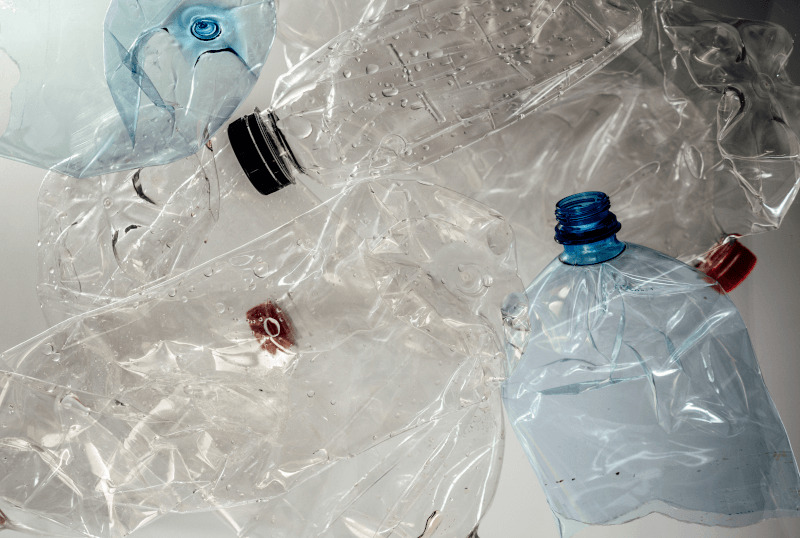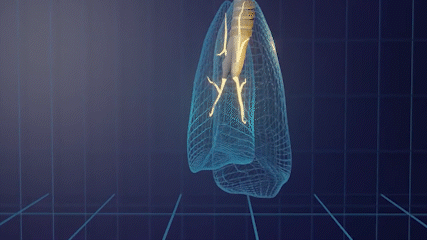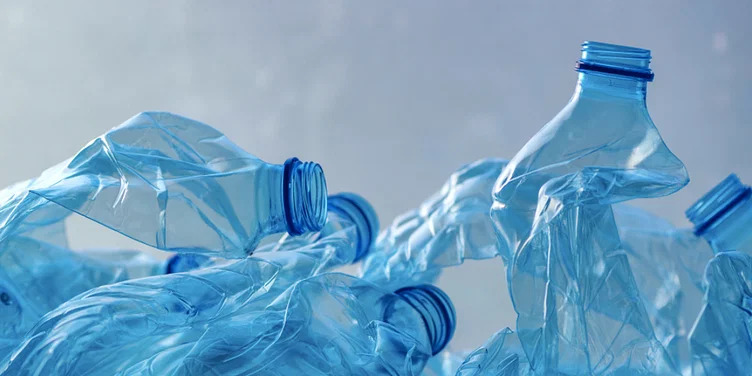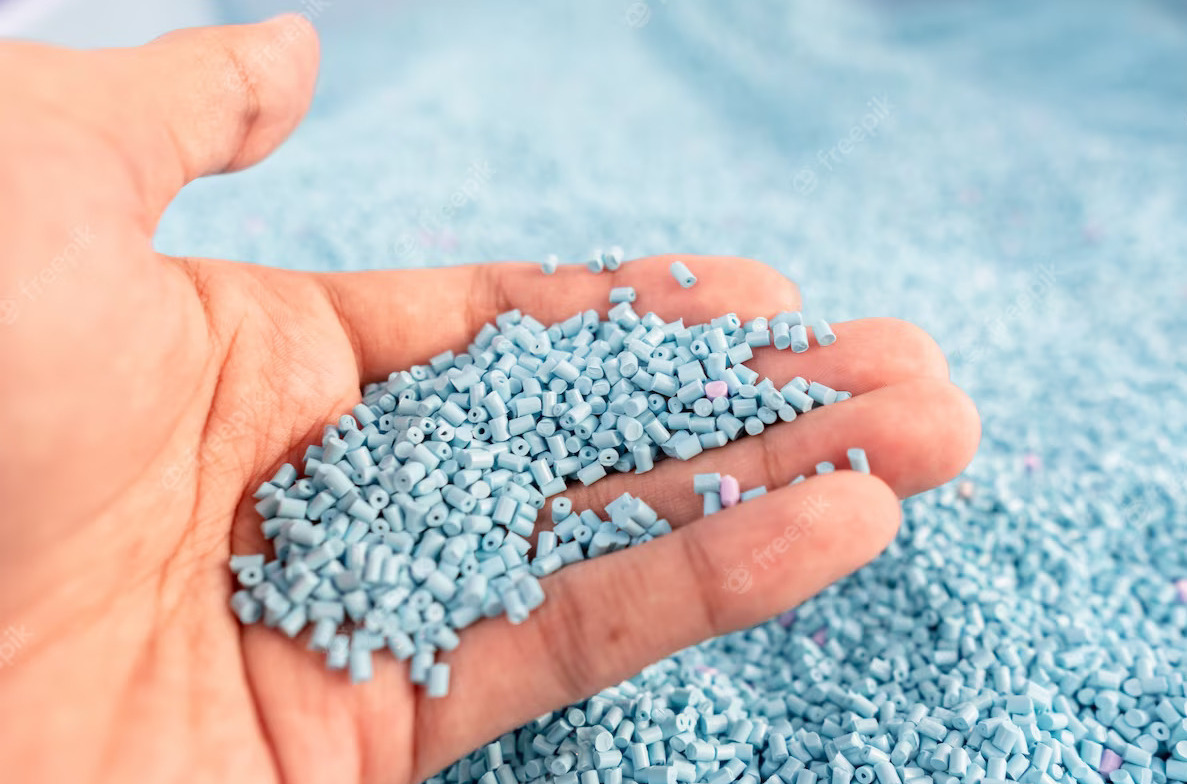The Macro Problem With Microplastics
Plastics are an convenient everyday item, but microplastics have become an environmental and human health problem.
March 20, 2023
Studies show from the highest mountain peaks, to soil samples in our forests and everyday consumer items, there’s no way to escape microplastics.
We breathe it, eat it, and drink it. And studies have linked microplastics to possible negative health effects.
Microplastics have long been negatively affecting the environment— impacting air, land and water. According to the National Oceanic and Atmospheric Administration (NOAA), billions of pounds of trash and other pollutants enter the ocean each year. A good chunk of this garbage is plastic debris, and since plastic never fully goes away or breaks down completely, this creates a bigger problem. The growing concern has the scientific community scrambling to find a solution.
Kay T. Ho, an environmental research scientist at the U.S Environmental Protection Agency (EPA), notes the ecological effects from microplastics.
“There’s a number of studies out there that show that microplastics, depending on the concentration, and depending on the shape of the plastic, and the size of the plastic, cause effects,” Ho said. “The current levels in our environment, in certain hotspots, definitely have ecological effects.”
And these current levels of microplastics are only increasing as time passes.
So, what are the ecological effects? According to the National Library of Medicine, “In aquatic ecosystems, microplastics are ingested by aquatic animals, affecting their growth and development and resulting in trophic transfer to higher organisms in the food chain. Therefore, consumption of aquatic products is a main primary source of human exposure to microplastics.” Marine organisms mistake microplastics for food, which can result in neurotoxicity and death.
There’s also studies linking microplastics and the harming of benthic communities, which consist of aquatic organisms such as sea anemones, sea stars, sea urchins, worms, and crabs. These organisms live on the bottom of the ocean floor, and play a vital role in maintaining water quality of rivers, streams, and oceans.
Land is in danger too, according to a 2021 report by the U.N. Environment Programme, which is responsible for coordinating an international response to environmental issues, microplastics can leach into soil through sewage sludge, which is applied to fields as fertilizer. This contaminants kill off larvae, mites, and other tiny organisms that maintain the fertility of the land.
In addition, microplastic pollution correlates with the increasing number of poverty stricken communities affected. According to a 2019 report by Tearfund, an international Christian relief and development organization, 2 billion people in the world’s poorest countries are working and living among piles of waste, the majority of which is plastic.
Since these countries have no efficient system to collect the piles of waste, most of it is burned or thrown into waterways, which means people in these countries are breathing and drinking toxic chemicals.
According to a study, these toxic chemicals in plastic, such as BPA and Phthalates, can act as endocrine-disruptors, which can negatively affect the hormonal balance in humans.
In other words, it could lower testosterone in men, cause women to miscarriage, and suffer premature births, and a myriad of other health effects, such as cancerous tumors and developmental disorders.
The Solutions
We hear the phrase “reduce, reuse, and recycle,” but is that system really helping? For plastics, maybe not. Plastic does not “recycle” in the way a consumer is led to believe — since plastic never fully breaks down, most of it gets spread back around into the environment.
According the U.N. Environment Programme in 2021, “Plastics are diverse, even more so than the number in the small triangle used in plastic labeling might suggest, due to the variety of methods of manufacturing, polymers forming their foundation, and plasticizers added to achieve different qualities. As a result, processing plastics simply cannot be achieved with a one-size fits-all solution, a fact which has hampered recycling and reuse efforts.”
A report released in 2021 by the U.S Department of Energy finds only about 5% of plastic is being recycled.
If tackling the issue through recycling isn’t the solution, then turning off the faucet — preventing the accumulation of plastic debris in the first place — might help.
“We have to recognize that what we do upstream will influence what happens downstream,” said Katherine Bunting-Howarth, associate director at New York Sea Grant. As millions of tons of plastic waste is either dumped in a landfill, or swept away through rainwater into oceans each year, the problem can be a mindfulness issue of garbage is stored.
“One of the key solutions to plastic pollution is prevention,” said Katie Morgan, NOAA’s mid-Atlantic regional coordinator, which includes Delaware, the District of Columbia, Maryland, New Jersey, New York, Pennsylvania, Virginia, and West Virginia. “If we are able to prevent plastic from leaking out into our environment, that’s ultimately going to be one of the key solutions to the marine debris challenge.”
Preventing plastic from entering the waste stream is the most effective practice, according to the internationally recognized waste hierarchy.
“We’re talking about outreach and education in communities, working with schools and children who may have the opportunity to better understand some of the impacts of their decisions to use certain products or not,” Morgan said. “And helping them better understand the impact of marine debris, so that they can make smarter choices as they sort of go through life. Working with community groups, and educating community leaders, and community members at all ages, so they better understand the decision-making processes, and how they might be able to shift from certain behaviors of using single-use plastics, to maybe thinking about using more reusable items.”
But prevention through education is also not enough. According to a report done by the Organization for Economic Co-operation and Development, plastic waste is projected to triple by 2060. Plastic companies have to take accountability for pollution.
Scott Coffin, a research scientist at the California State Water Resources Control Board, said, “I suppose if there were a single solution, like a silver-bullet to plastic pollution, it would be extended producer responsibility. And the reason that’s a silver-bullet is it provides feedback loops that control the issue from an economic perspective.”
According to statistics from 2021, annual shipments of the U.S plastic industry was worth $395 billion in 2020.
Realistically, profits for plastic manufacturers would plummet if they’re constantly charged for every piece of plastic they make that ends up wasted in the environment. Therefore, it would be in their best interest to make their plastic biodegradable, if not 100% recyclable. This would take a large legislative effort nevertheless, and would take a long time before it becomes an enacted law.
However, it’s complicated. Many elements will have to be at play to really resolve plastic pollution, and the cleaning up of microplastics.
And nevertheless, microplastics are tiny. Once it enters the oceans, it’s extremely difficult to clean up. But there are devices such as a Raman Microspectrophotometer, which can help detect whether a particle found in a body of water is a microplastic. This microscope is a laser-based device that measures sample particles through a laser-light, once the laser-light hits the particle, it then produces a spectrum of possible chemical information.
There’s also The Ocean Cleanup, which is a non-profit organization that uses a giant net attached to two boats and other technologies to clean up plastic waste from the world’s oceans.
Erica Cirino is a freelance science writer, artist, and author, of the book Thicker Than Water.

Do microplastics affect human health? Well, potentially.
Microplastics are made up of a myriad of complex chemical additives, and these substances can be associated with health problems.
Through inhaling and ingesting, microplastics could enter various organs, which may damage cells, and induce inflammatory and immune reactions. These chemicals cause blood vessels to leak fluid into the tissues, causing swelling.
There’s also the possibility of microplastics affecting fertility in men and women. According to multiple studies, semen quality decreases when exposed to the toxic chemicals, such as Bisphenol A, and Phthalates which are used in plastics.
Not only could testosterone and sperm count decrease in men, but women could also have an increase risk of premature ovarian failure.
Microplastics have been found in human lungs, blood, and, even, human feces.
According to a recent study published by the Human Reproduction Update, a European scientific journal, sperm counts have fallen by 50% over the past five decades.
On average, sperm counts have dropped 1.2% per year from 1973-2018. Data from 2000-18, showed a 2.6% drop per year. This has been observed across the board worldwide.
The leading author of the study told Euro News, “We have a serious problem on our hands that, if not mitigated, could threaten mankind’s survival.”
Hagai Levine, of the Hebrew University of Jerusalem’s Hadassah Braun School of Public Health, noted that the drop reflected “a global crisis related to our modern environment and lifestyle,” and endocrine disrupting chemicals negatively affect the hormonal and reproductive systems. (More information available via Euro News here.)
- Study 1: Human Health Effects of Microplastics
- Study 2: Fertility
- Article 1: Human Health and Marine Effects
- Article 2: Health Summit



The World Health Organization (WHO) said in 2019 that there isn’t enough evidence to conclude microplastics posing a threat to human health, at least in drinking water.
According to WHO, “Further research is needed to obtain a more accurate assessment of exposure to microplastics and their potential impacts on human health.”
Most studies done, so far, have found a possible correlation for microplastics and negative effects on human health, but since research only recently began, the evidence isn’t conclusive.

The chemical makeup of plastics and other products
BPA is a chemical compound found in various plastics. It’s used to harden plastic and can be found in water bottles, plastic food containers, and plastic food packaging.
The chemical was first used in the 1950s when manufacturing of plastics really started to take off.
Research has associated BPA with harmful human health effects such as increased blood pressure, type 2 diabetes, infertility, cardiovascular disease, and harm to the brain and prostate glands of infant children.
In 2012, the Food and Drug Administration banned the use of BPA in baby formula cans, baby bottles, and sippy cups. However, the FDA has said that BPA is safe at low-level doses, and suggested more research on harmful effects
Phthalates, another chemical found in plastics, is used to increase flexibility, transparency, durability, and longevity of plastic. The chemical can be found in personal care products such as nail polish, perfumes, deodorants, hair gels, shampoos, hair sprays, body lotions, and water bottles.
Associated health risks from phthalates include infertility in both men and women, obesity, type 2 diabetes, asthma, and neurodevelopmental and neurobehavioral disorders.
Yet, more research has once again been suggested to conclude these potential negative health effects.
The Center for Environmental Health, a non-profit organization working to protect people from harmful chemicals in air, food, and everyday products, have recently discovered high levels of BPA in sports wear.
And after testing socks, CEH accordingly tested sports bras, and athletic shirts, and found up to 22 times the safe limit of BPA. The products tested were from brands, such as The North Face, Brooks, Mizuno, Athleta, New Balance, Reebok, PINK, Asics, All in Motion, Nike, and FILA.
People are exposed to BPA through ingestion (e.g., from eating food or drinking water from containers that have leached BPA) or by absorption through skin (e.g., from handling receipt paper).
Studies have shown that BPA can be absorbed through skin and end up in the bloodstream after handling receipt paper for seconds or a few minutes at a time. Sports bras and athletic shirts are worn for hours at a time, and you’re meant to sweat in them, so it is concerning to be finding such high levels of BPA in our clothing,” Leiva said.
According to the Environmental Working Group, an activist group that specializes in research and advocacy in the areas of agricultural subsidies, toxic chemicals, drinking water pollutants, and corporate accountability, “Hundreds of everyday products are made with highly toxic fluorinated chemicals called PFAS. They build up in our bodies and never break down in the environment. Very small doses of PFAS have been linked to cancer, reproductive and immune system harm, and other diseases.”
PFAS, which stand for per or poly-fluoroalkyl substances, are a class of about 12,000 chemicals and are found inside the blood of 99% of Americans. They can be found in almost everything from jackets and shoes made by certain brands, to personal care and cosmetic products, to fast food wrappers, to non-stick cookware, to drinking water (bottled and tap). They’re added to products to make them water proof, stain-resistant, and non-stick.
Local 12, a television station affiliated with CBS in Cincinnati Ohio, tested drinking water out of taps. According to their report, “We collected samples at 11 locations in Maryland, Virginia, and in Washington, DC, including at the US Capitol and inside the lobby of the EPA. We sent the tests to Suburban Labs, one of a handful of specialized labs across the country that is certified to test for 18 PFAS chemicals. More than a third of our samples contained PFOA (perfluorooctanoic acid), generally viewed by experts as one of the most serious PFAS chemicals.”
Environmental Science and Technology Letters, an online-only peer-reviewed scientific journal publishing brief research reports in the fields of environmental science, and technology, published a study that mapped out 57,412 PFAS contamination sites across the U.S. The list included military sites, major airports, wastewater treatment plants, and industrial facilities. PFAS compounds are currently under regulated, however the Environmental Protection Agency or EPA, a U.S federal agency tasked with environmental protection matters, has recently increased transparency around PFAS contamination.
Negative health effects from PFAS chemicals include testicular, kidney, liver, and pancreatic cancer, reproductive problems, weakened childhood immunity, low birth weight, endocrine disruption, increased cholesterol, and obesity in children and dieting adults.
A small guide to avoiding these chemicals has been published by the Environmental Working Group.
Jimena Diaz Leiva, CEH science director, said, “CEH sent legal notices to 8 brands of sports bras and 6 brands of athletic shirts. The sports bra brands are Athleta, PINK, Asics, The North Face, Brooks, All in Motion, Nike, and FILA. The activewear shirt brands are The North Face, Brooks, Mizuno, Athleta, New Balance, and Reebok.”
“The legal notices ask brands to reformulate their products to remove all bisphenols including BPA and give defendants 60 days to work with CEH. CEH uses Proposition 65, passed by California voters in 1986, to push companies to reformulate their products or adjust their manufacturing processes (which sometimes means working with their supply chain), in order to eliminate or remove the toxic chemical(s) of concern that would otherwise require a health warning,” she said.
In 2020, Senate Majority Leader Chuck Schumer pushed the EPA to designate PFAS as toxic substances, and to establish a Maximum Contaminant Level (MCL), the legal threshold limit of a substance allowed in public water systems.
“I pushed the Administrator to regulate PFAS as a broader class and swiftly phase out non-essential uses of PFAS chemicals. As several communities across the state of New York struggle with drinking water contamination, human exposure, and clean up challenges due to PFAS pollution, I have continued to work with these impacted communities to make the public aware of possible exposure and to ensure proper cleanup,” Schumer said.
More information on PFAS and excerpts for staying safe:
- Article 1: PFAS in Bottled Water
- Article 2: PFAS and Human Health
- Article 3: PFAS Water Regulation
- Study 1: PFAS and Health Effects
Since BPA, Phthalates, and PFAS chemicals are everywhere, 100% avoidance is impossible, but there are things you can do to mitigate the threat they pose.
Buy a water filter that not only filters out microplastics, but also removes PFAS chemicals.
Do your research before buying any cosmetics, and personal care products, this includes soaps, shampoos, creams, nail polish, perfumes, deodorant, or colognes.
Don’t drink out of plastic water bottles, and instead opt for a stainless steel bottle.
Replace all your plastic food storage containers with glass containers, washing the plastic over and over will cause these chemicals to leech out into your food overtime.
Do your research before buying any clothes from certain brands, some brands may have these chemicals on their jackets, athletic wear, socks, and even shoes.
Limit your fast food intake since fast food wrappers are coated in these chemicals.
Avoid touching receipts if possible when buying anything, instead opt for a digital receipt.
Write to your local state senator, or congressman, and urge them to enact laws to prevent these chemicals from contaminating. You can send an automated email to your local representative through the Environmental Working Groups website.

A brief history of plastics
The history of plastic begins with polymers, which are abound in nature. Cellulose, the material that makes up the cell walls of plants, is a very common natural polymer.
In 1869, John Wesley Hyatt, an American inventor, created the first synthetic polymer. It led to a plastic that could be crafted into a variety of shapes and sizes, and eliminated the slaughtering of animals for materials, such as elephants for their ivory, and hawksbill turtles for their shells that made combs, and jewelry.
Plastic quickly began to replace other everyday materials, and became indispensable to modern life. It could be molded easily, it’s waterproof, it’s durable, and it’s very cheap to make.
World War II gave plastic a strong hold when it came to manufacturing materials for the war effort. Parachutes, ropes, body armor, helmet liners, and more, they were all starting to be made out of plastic.
The trouble with plastic began in the 1960s. The American economy was booming after the war, and the use of plastic was becoming increasingly popular. However, in those post war years there was a shift in perceptions of plastic, as the public became increasingly aware of environmental problems.
Plastic debris in the oceans was first discovered in the 1960s.
Silent Spring, released by marine biologist Rachel Carson in 1962, was a book that exposed the dangers of chemical pesticides, and the role pollution plays on negatively affecting our planet.
And oil spills such as the 1969 Santa Barbara, and Cuyahoga River spills raised concerns over pollution.
With the ever so increasing knowledge about plastic pollution, even the plastics industry were aware of its products polluting the worlds oceans.
According to a report released by the Center for International Environmental Law, an environmental law firm based in Switzerland, “Scientists became aware of the ocean plastics problem in the 1950s, and understanding of the nature and severity of the problem grew over the next decades. The major chemical and petroleum companies and industry groups were aware of the ocean plastics problem no later than the 1970s.”
Plastic companies in the 80s then started promoting recycling as a solution, yet said recycling system isn’t perfect, and most plastic still end up back into the environment.
Plastics continue to face controversy as pollution increasingly becomes a problem.
